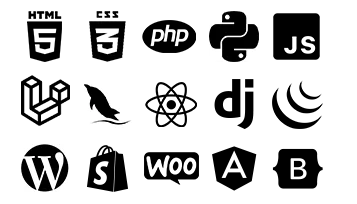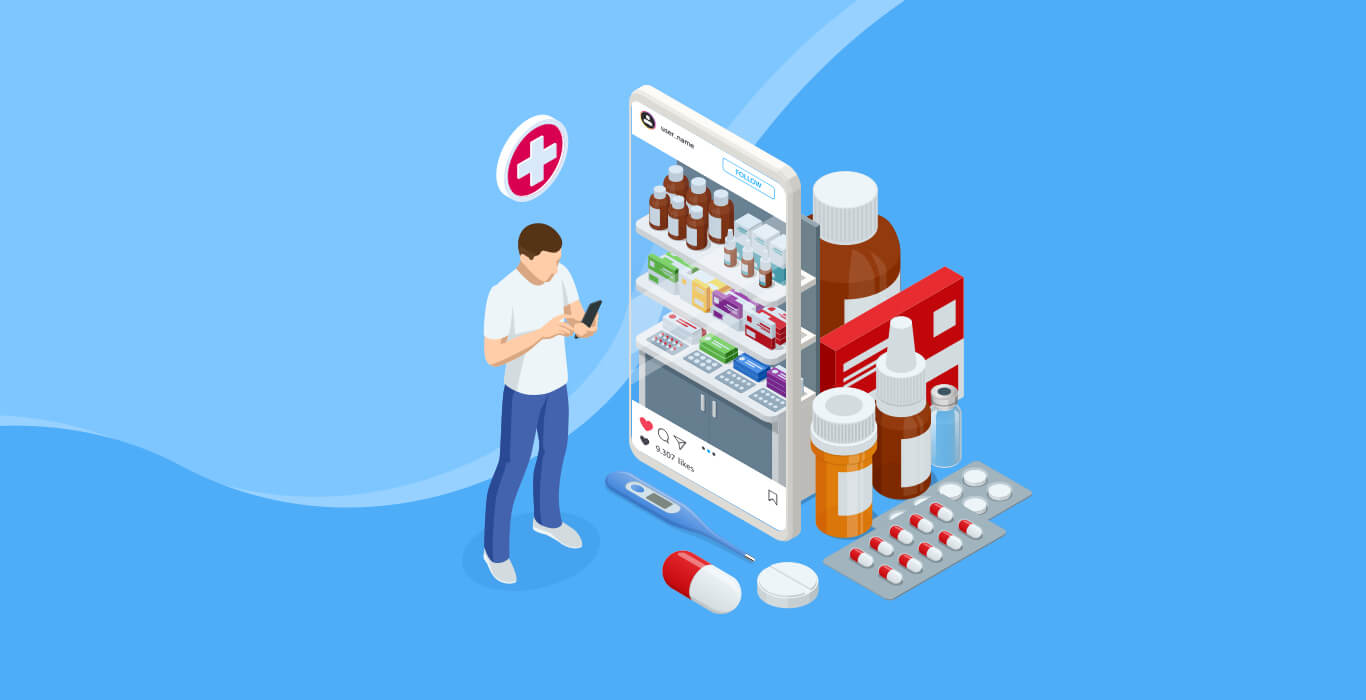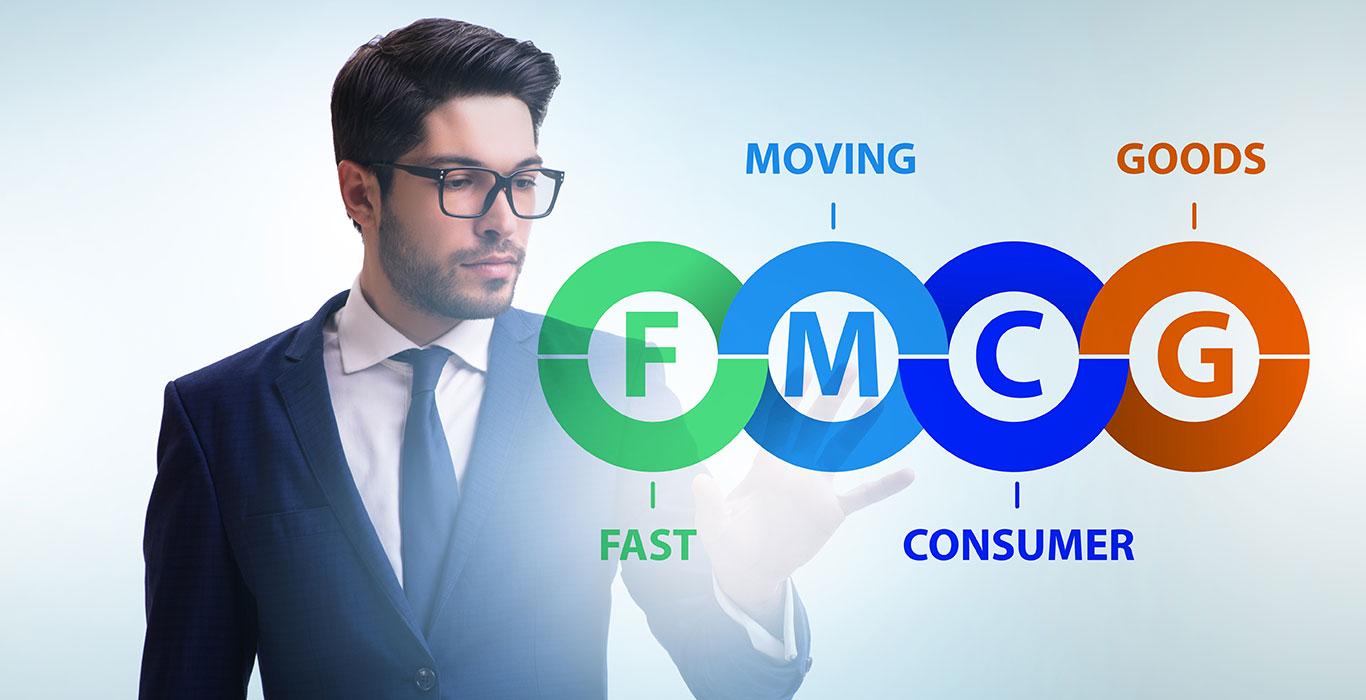Remember how ads seemed to be random, such as seeing car insurance advertisements when you did not own a car? Now, brands seem to know precisely what you want, sometimes even before you do.
From Netflix suggesting your next binge to Google finishing your sentences. AI is everywhere. But one place it’s making a massive impact-often behind the scenes-is digital marketing.

Still skeptical as to whether “AI in Digital Marketing” is just another buzz term that will fade away? Let me share a little insight:
A report summarised in Forrester Research via Marketing Dive shows that marketing and sales functions lead nearly 50 % of AI initiatives in organisations, this shows how central AI has become in go-to-market strategies.
But don’t worry; it has nothing to do with robots swooping in and replacing your marketing department. It has to do with turbocharging your team! Imagine AI as that amazingly intelligent buddy who never gets weary, can run figures quicker than a calculator on turbo and somehow always seems to know precisely what your customers are wanting.

What’s Inside This Guide?
- See how AI can write your blogs, Insta posts, and emails so you’re not stuck staring at a blank page.
- Find out how smart chatbots handle your customers’ questions 24/7 — even while you’re asleep.
- Learn how AI can guess what your customers will do next so you sell more with less guesswork.
- Check out easy-to-use AI tools (with costs) you can try right now to make marketing way easier.
What is AI in Digital Marketing?
AI in digital marketing means using smart computer programs to do tasks humans usually do — but faster, better, and at scale. For example, AI can write blog posts, create social media captions, run ads, talk to customers through chatbots, and even predict what your customers want to buy next.
To make this even more simple at a generic level, AI in digital marketing is like having a really smart assistant who:
- Never sleeps (seriously, it works 24/7)
- Remembers everything about your customers
- Can predict what people want before they even know it
- Does boring tasks so you don’t have to
- Gets smarter every day
Take Netflix as an example, it’s pretty amazing how it seems to know just what show you’re itching to binge next, right? That’s AI at work, analyzing your viewing habits and comparing them to millions of other users, saying, “This person is definitely going to enjoy this show!” The same concept is now being applied in marketing. Instead of just taking wild guesses about what customers might like, AI can actually pinpoint what they really want.
Here’s What AI Actually Does in Marketing:
- AI Predicts Customer Behavior: It tells you which customers are about to buy something or which ones might be closer to stop buying from you. This can help you curate strategies accordingly.
- Creates Personal Experiences: Have you ever felt that e-commerce sites like Amazon seem to read your mind with product suggestions? That’s AI! Making not just you but every visitor feel like the website was built just for them.
- Automates the Boring Stuff: There are multiple repetitive tasks like scheduling social media posts or sending follow-up emails that we do daily. AI handles that while you focus on the fun, creative or productivity.
- Makes Smart Decisions Fast: While you’re still thinking about whether to increase your ad budget, AI has already analyzed a million data points and made the adjustment.
Why Everyone’s Going Crazy Over AI Marketing
Let me hit you with some numbers that’ll blow your mind:
|
What AI Does |
Why It Matters |
|
Analyzes customer data |
No more guessing what customers want |
|
Creates content |
Write blogs 3x faster |
|
Saves time |
More time for strategy and creativity |
|
Improves results |
More money in your pocket |
|
Predicts outcomes |
Plan better campaigns |
Let me narrate a true story: A friend of mine owns a small online clothing store in Mumbai. She used to spend around 4-5 hours, almost every day, answering customer inquiries, updating product descriptions, and deciding which items to promote. Then she discovered AI-powered chatbots and content tools. And now? The chatbot takes care of 80% of the queries that come from customers, AI writes her product descriptions, and smart algorithms suggest what to showcase on the homepage of her website. She transformed her work life from grueling 12-hour days to focusing on what she truly loves-hunting for trendy new clothes and expanding her business.
1. Smarter Content Creation
Gone are the days of spending hours staring at a blank screen trying to craft the perfect blog or social post. AI has revolutionized the way marketers create, optimize, and distribute content.
- AI for Blog Writing:
Provide a simple prompt such as “Write a blog about summer fashion trends,” and within seconds, AI tools can generate a well-structured, 1,500-word draft. Marketers can then refine the tone and add brand-specific insights, saving significant time without compromising quality. - AI for Social Media:
AI can generate engaging captions, recommend relevant hashtags, and even schedule posts at optimal times to maximize engagement. This ensures consistent, brand-aligned communication across all social channels. - AI for Email Marketing:
Personalization has moved far beyond “Hi [Name].” AI can analyze customer preferences, purchase history, and engagement behavior to tailor email content for each recipient — leading to higher open rates and conversions. - Real Example:
A boutique bakery in Delhi began using AI to manage its social media content. Previously, it posted a few times a week with generic updates. With AI assistance, the brand now posts daily, sharing engaging stories like: - “The secret ingredient in today’s sourdough? 24 hours of patience and a whole lot of love. Here’s why slow fermentation makes all the difference…”
- Within three months, their engagement rate increased by over 300%, demonstrating the impact of data-driven creativity.
2. Customer Service That Never Sleeps
AI has redefined customer support by making it faster, more efficient, and available 24/7.
Intelligent Chatbots:
Modern AI chatbots understand context, recall previous interactions, and respond naturally to customer queries. They can even detect frustration and seamlessly transfer complex cases to human agents.
Instant, Accurate Responses:
From product recommendations to return policies, AI systems deliver immediate, relevant answers — improving customer satisfaction and retention.
Personalized Assistance:
Advanced AI can act as a digital shopping assistant, learning from each interaction to recommend products tailored to individual tastes and behaviors.
3. Predictive Insights for Smarter Decisions
AI’s ability to analyze vast amounts of data enables marketers to make decisions backed by foresight rather than guesswork.
Sales Forecasting:
By assessing historical sales, market trends, and external factors like seasonality or events, AI can forecast future demand and help businesses plan inventory and campaigns more effectively.
Customer Behavior Analysis:
AI identifies patterns in purchasing and engagement data to highlight loyal customers, predict churn, and recognize high-potential leads.
Campaign Performance Prediction:
Before launching a campaign, AI can simulate potential outcomes based on audience data and past performance, helping marketers allocate budgets more efficiently.
Best AI Tools You Can Start Using Today
Let’s talk about actual tools you can use starting tomorrow. I’ve organized these by what you want to accomplish:
For Creating Content
- ChatGPT: The most famous AI tool. Great for writing blog posts, social media captions, and email content. It’s like having a copywriter who never gets tired.
- Jasper AI: Built specifically for marketing content. It understands different types of marketing copy and can write in your brand’s voice.
- Copy.ai: Perfect for short-form content like ad copy, product descriptions, and social media posts.
- Canva AI: Creates graphics, presentations, and visual content. You just describe what you want, and it designs it for you.
For Understanding Your Customers
- Google Analytics Intelligence (Free!): Already built into Google Analytics. It automatically finds insights in your data and alerts you to important changes.
- HubSpot AI: Predicts which leads are most likely to buy, optimizes email timing, and automates follow-up messages.
- Hotjar AI: Analyzes how people use your website and suggests improvements to increase conversions.
For Social Media
- Buffer AI: Schedules posts at optimal times, suggests content, and analyzes what’s working best.
- Hootsuite Insights: Monitors social media mentions and analyzes sentiment about your brand.
Creating Content with AI (It’s Easier Than You Think)
Let me walk you through exactly how to use AI for content creation, step by step.
Writing Blog Posts with AI
Step 1: Tell AI your topic and target audience Example: “Write a blog post about home workout equipment for busy professionals in India”
Step 2: Let AI create an outline It’ll suggest headings like:
- Why home workouts are perfect for busy schedules
- Essential equipment that fits in small spaces
- 15-minute routines for maximum impact
Step 3: Expand each section AI writes detailed content for each heading, including tips, benefits, and specific product recommendations.
Step 4: Add your personal touch Edit the content to match your brand voice, add personal experiences, and include local references.
The Result: A comprehensive blog post that would have taken you 6 hours to write, completed in 1 hour.
Creating Social Media Content
Artificial intelligence can create entire social media calendars. Here’s what a week of AI-generated posts might look like for a fitness brand:
Monday Motivation: “New week, new goals! What’s one healthy habit you’re committing to this week? 
Tuesday Tips: “Quick tip: Add 10 bodyweight squats to your morning routine. Your legs will thank you later! Here’s the perfect form… 
Wednesday Wisdom: “Remember: Progress isn’t always visible. Sometimes it’s the energy you feel, the confidence you gain, or the stress you release. Keep going! 
Each post is tailored to the day, includes relevant hashtags, and matches your brand voice.
Email Marketing That Actually Works
Instead of sending out the same email to everyone, AI tailors different versions based on how customers behave. For New Customers: A warm welcome email packed with essential info and beginner tips. For Regular Customers: Updates on new products they might find interesting, based on their purchase history. For Inactive Customers: Special offers and gentle reminders about what made them fall in love with your brand in the first place.
Take, for example, a case study from an online electronics store in Bangalore that embraced AI in their email marketing. Rather than blasting out generic “Check out our sale!” emails, AI crafted personalized messages like, “Hi Priya, remember that laptop you were eyeing last week? It’s now 20% off, and we only have 3 left in stock!” As a result, their email open rates skyrocketed from 15% to 35%, and sales from email campaigns surged by an impressive 180%.
Using Data Like a Fortune Teller
Data used to be this scary, complicated thing that only tech experts could understand. AI changes that completely. Now it’s like having a fortune teller who actually knows what they’re talking about.
Understanding Your Customers Better
AI looks at everything your customers do:
- Which pages they visit on your website
- How long they stay on each page
- What they click on
- What time they’re most active
- Which emails they open
- What products they look at but don’t buy
Then it creates detailed profiles like: “Sarah is a 28-year-old working professional who shops online during lunch breaks, prefers eco-friendly products, and is likely to buy within 3 days of first visiting your site.”
Predicting What Will Happen Next
This is where AI gets really magical:
Sales Predictions: “Based on current trends, you’ll likely sell 150 units of Product A next month, but only 50 units of Product B. Maybe reduce the inventory order for Product B?”
Customer Behavior: “These 25 customers haven’t bought anything in 2 months and are showing signs they might stop buying. Here’s a personalized offer to win them back.”
Campaign Performance: “This ad campaign is likely to get a 3.2% click-through rate and cost ₹45 per conversion. Your budget of ₹50,000 should generate about 1,100 conversions.”
Making Real-Time Adjustments
The coolest part? AI doesn’t just predict – it acts on those predictions.
If your AI notices that customers from Delhi are responding better to your ads on weekday mornings, it automatically shows more ads to Delhi customers during those times. If people from Mumbai prefer video ads while Bangalore customers like image ads, AI adjusts accordingly.
Making Every Customer Feel Special
You know that feeling when you walk into your favorite local store and the owner remembers exactly what you like? AI does that for your online business, but for thousands of customers at once.
Website Personalization
Imagine two people visit your website:
Person A: First-time visitor from Pune, looking at budget products What they see: Welcome message for new visitors, budget-friendly product recommendations, beginner-friendly content
Person B: Returning customer from Mumbai who’s bought premium products before What they see: “Welcome back!” message, premium product recommendations, advanced tips and tutorials
Same website, completely different experience. That’s AI personalization in action.
Email That Feels Personal
Instead of sending the same newsletter to everyone, AI creates different versions:
The Bargain Hunter: Gets emails about sales, discounts, and value deals The Premium Customer: Receives information about new high-end products and exclusive offers The Browser: Gets gentle reminders about items they looked at but didn’t buy
Social Media That Speaks to Individuals
AI analyzes which type of content each follower engages with most:
- Some people love motivational quotes
- Others prefer behind-the-scenes content
- Some engage more with product tutorials
- Others like customer success stories
Then it shows each person more of what they actually want to see.
Real Example: A small jewelry business in Jaipur started using AI personalization on their website. Before AI, every visitor saw the same homepage with their bestselling items. After implementing AI, the website showed:
- Traditional jewelry to visitors interested in ethnic wear
- Modern designs to those browsing contemporary fashion
- Wedding jewelry to people searching for bridal accessories
- Budget collections to price-sensitive visitors
Result? Their conversion rate jumped from 2.1% to 4.7% in just two months!
Setting Everything on Autopilot
This is where AI becomes your personal marketing team that never takes a day off.
Lead Management That Runs Itself
Automatic Lead Scoring: AI looks at every person who visits your website and gives them a score from 1-100 based on how likely they are to buy. People who score 80+ get immediate attention, while lower scores go into nurturing campaigns.
Smart Follow-ups: Instead of generic “Thanks for your interest” emails, AI sends personalized follow-ups based on what each person looked at:
- Visited pricing page → Gets email about payment plans and ROI
- Downloaded a guide → Receives related tips and case studies
- Looked at specific products → Gets detailed product information and reviews
Social Media on Cruise Control
AI can handle your entire social media presence:
Content Planning: Creates a month’s worth of posts based on your industry, audience, and trending topics Optimal Timing: Posts when your specific audience is most active (not just generic “best times”) Engagement: Responds to comments and messages with appropriate, helpful replies Hashtag Research: Finds the best hashtags for each post to maximize reach
Email Campaigns That Run Themselves
Welcome Series: New subscribers automatically get a series of emails introducing your brand, sharing valuable content, and gradually leading them toward a purchase.
Abandoned Cart Recovery: When someone adds items to their cart but doesn’t buy, AI sends a series of increasingly compelling emails to bring them back.
Re-engagement Campaigns: Customers who haven’t bought in a while automatically receive personalized offers to win them back.
Birthday and Anniversary Emails: AI tracks customer dates and sends personalized celebration emails with special offers.
Counting Your Money (ROI Stuff)
Let’s talk about the thing that really matters – how much money AI makes (or saves) you.
What Success Actually Looks Like
Here are the real numbers businesses are seeing:
What AI Improves | Before AI | After AI | Your Benefit |
Email open rates | 18% | 32% | More people see your messages |
Website conversion | 2.3% | 4.1% | Almost double the sales |
Customer service time | 24 hours | 5 minutes | Happy customers, lower costs |
Content creation time | 8 hours/post | 2 hours/post | 75% time savings |
Ad targeting accuracy | 45% | 78% | Less wasted ad spend |
Calculating Your AI Return on Investment
Let’s use a real example. Say you run an online course business:
AI Investment: ₹15,000/month for tools and setup Time Savings: 20 hours/week (worth ₹25,000/month if you value your time at ₹1,250/hour) Increased Conversions: Website conversion improves from 2% to 3.5% Cost Savings: Reduce customer service costs by ₹10,000/month
Monthly Benefit: ₹35,000 (time savings + cost reduction + increased sales) Monthly Cost: ₹15,000 Net Benefit: ₹20,000/month ROI: 133% return on investment
Real Business Example
A Mumbai-based digital marketing agency implemented AI across their operations:
What They Did:
- Used AI for client content creation
- Automated social media management
- Implemented AI chatbots for lead qualification
- Used predictive analytics for campaign optimization
Results After 6 Months:
- Handled 40% more clients with the same team size
- Increased client retention from 70% to 90%
- Improved campaign performance by 60% on average
- Reduced manual work by 15 hours per week per team member
Bottom Line: Revenue increased by ₹25 lakhs while operational costs stayed the same. That’s pure profit improvement.
How to Actually Get Started
Okay, enough theory. Let’s talk about how you can start using AI in your marketing today, even if you’re a complete beginner.
Week 1: The Foundation
Day 1-2: Audit What You Have
- List all your current marketing tools
- Check if any already have AI features (many do!)
- Identify your biggest time-wasters and pain points
Day 3-4: Set Clear Goals Instead of vague goals like “use AI for marketing,” be specific:
- “Reduce content creation time by 50%”
- “Increase email open rates to 25%”
- “Automate 80% of customer service inquiries”
Day 5-7: Choose Your First Tool Start with ONE tool that addresses your biggest pain point:
- If content creation takes forever → Try ChatGPT or Jasper
- If you struggle with social media consistency → Try Buffer AI
- If customer service overwhelms you → Try a chatbot platform
Week 2: First Implementation
Pick One Small Project: Don’t try to revolutionize everything at once. Start with something like:
- Creating a week’s worth of social media posts
- Writing one blog post with AI assistance
- Setting up a simple chatbot for common questions
Test and Learn: Use your AI tool for the chosen project. Pay attention to:
- How much time it saves
- Quality of the output
- What needs human editing
- Customer response (if applicable)
Month 1: Building Momentum
Expand Gradually: Once you’re comfortable with your first AI tool, add one more application:
- If you started with content, try email personalization
- If you started with chatbots, try social media automation
Document Everything: Keep track of:
- Time saved each week
- Quality improvements
- Customer feedback
- Financial impact
Quarter 1: Strategic Integration
Connect the Dots: Start integrating your AI tools so they work together:
- Use data from your chatbot to improve email campaigns
- Let social media insights inform your content creation
- Use website behavior data to personalize customer service
Scale What Works: Focus your time and budget on AI applications that deliver the best results for your specific business.
Connecting AI with Your Overall Digital Marketing Strategy
AI doesn’t work in isolation – it makes everything else you’re doing better. Here’s how it connects with other aspects of your marketing:
When you’re developing comprehensive Digital Marketing Strategies, AI becomes the engine that powers better decision-making across all channels. Instead of guessing which strategies will work, AI analyzes your data to recommend the most effective approaches.
For social media marketing, AI amplifies all the benefits of social media by helping you understand exactly when your audience is online, what content they engage with most, and which platforms drive the best results for your specific business.
If you’re in manufacturing, combining AI with traditional SEO for manufacturing can help you create highly technical content that answers specific industry questions, identify trending industrial keywords, and personalize content for different types of buyers (engineers, procurement managers, etc.).
Food and beverage businesses can supercharge their Marketing Strategies for Food and Beverage Businesses by using AI to analyze food trends, predict seasonal demand, personalize menu recommendations, and optimize food photography for maximum appeal.
Real estate professionals can enhance their Real Estate Strategies with AI by predicting which properties will sell fastest, automatically generating property descriptions, identifying the best leads from website visitors, and personalizing property recommendations based on buyer behavior.
The relationship between AI and PPC advertising is particularly powerful. Understanding Different Types of PPC Ads becomes even more valuable when AI handles bid optimization, audience targeting, and creative testing across all these platforms simultaneously.
What’s Coming Next
The future of AI in marketing is going to be wild. Here’s what’s coming that’ll make today’s AI look like a calculator compared to a smartphone:
Hyper-Personalization
Soon, AI won’t just personalize content – it’ll create completely unique experiences for each person:
- Websites that redesign themselves for each visitor
- Videos that change their message based on who’s watching
- Products that modify themselves based on individual preferences
AI That Understands Emotions
New AI can read emotions from text, voice, and even facial expressions:
- Chatbots that know when customers are frustrated and adjust their tone
- Email campaigns that adapt based on how people are feeling
- Social media content that responds to the collective mood of your audience
Predictive Everything
AI will predict almost everything about your business:
- Which employees are likely to quit (so you can address issues early)
- When your best customers will make their next purchase
- What new products your market wants before competitors even think of them
Voice and Visual Search Revolution
- People will search by asking questions out loud
- Customers will take photos to find products
- AI will understand context better than humans
What This Means for You: Start building good data habits now. The businesses with the best data will have the biggest advantage when these new AI capabilities arrive.
Common Problems and Easy Fixes using AI in Digital Marketing
Let’s be honest – implementing AI isn’t always smooth sailing. Here are the most common problems people face and simple solutions:
“I Don’t Have Good Data”
The Problem: AI needs data to work well, but your customer data is messy, incomplete, or scattered across different systems.
Easy Fix: Start small and clean as you go
- Use AI tools that work with whatever data you have
- Set up proper data collection for new customers
- Gradually improve existing data quality
- Don’t wait for perfect data – start with what you have
“It’s Too Expensive”
The Problem: You think AI tools cost too much for your budget.
Reality Check: Most AI tools cost less than hiring one additional employee
- Start with free tools like Google Analytics Intelligence
- Many AI features are built into tools you already use
- Calculate the cost of NOT using AI (lost opportunities, time wasted)
Smart Approach: Begin with one affordable tool and scale as you see results.
“My Team Doesn’t Know How to Use It”
The Problem: Your team is intimidated by AI technology.
The Solution: Make it about helping, not replacing
- Start with training on user-friendly tools
- Show how AI makes their jobs easier, not harder
- Let early adopters become internal champions
- Celebrate small wins to build confidence
“The Results Don’t Look Human Enough”
The Problem: AI-generated content sounds robotic or doesn’t match your brand voice.
Quick Fixes:
- Always edit AI output before publishing
- Train AI with examples of your best content
- Use AI for first drafts, humans for final polish
- Develop templates that maintain your brand voice
“I Don’t Know Which Tool to Choose”
The Problem: There are hundreds of AI tools, and you’re overwhelmed by options.
Simple Decision Framework:
- What’s your biggest pain point? (content, customer service, data analysis)
- What’s your budget? (₹1,000, ₹5,000, ₹10,000+ per month)
- How tech-savvy is your team? (beginner, intermediate, advanced)
- Start with one tool that addresses your biggest pain point
Your Step-by-Step Action Plan
Alright, let’s turn all this information into a concrete plan you can actually follow:
This Week (Days 1-7)
- Monday: Read this guide completely (you’re almost done!)
- Tuesday: Audit your current marketing activities – what takes the most time?
- Wednesday: Sign up for one free AI tool trial (start with ChatGPT or Google Analytics Intelligence)
- Thursday: Try creating one piece of content with AI
- Friday: Set up basic tracking to measure your results
- Weekend: Research one paid AI tool that could help your biggest pain point
This Month (Weeks 2-4)
- Week 2: Use your chosen AI tool daily for small tasks
- Week 3: Implement one automation (like social media scheduling or email responses)
- Week 4: Measure your results and document time/money saved
The Bottom Line
Look, I’m not going to sugarcoat this: AI in digital marketing isn’t some fad that’s going to burn out. It’s becoming no less integral than having a website or using social media. Those businesses that can figure this out now are going to have a huge advantage over those who wait.
The good news is that you don’t have to be an overnight expert in technology. You don’t need to spend some sort of fortune. You can start somewhere and then learn along the way. You will develop your AI capabilities with time.
They’re those who started small, made mistakes, and learned from them in order to improve their approach over time.
Frequently Asked Questions
1. What exactly is AI in digital marketing, and why should I care?
Well, AI acts like a savvy assistant, helping to sift through data, whip up content in a flash, and fine-tune targeting. It’s crucial because your competitors are already on board, customers are craving personalized experiences, and businesses leveraging AI are seeing impressive results while saving precious time.
2. I’m not tech-savvy at all. Can I still use AI for marketing?
Not at all! Most AI tools are designed to be straightforward and user-friendly. Many are integrated into platforms you’re probably already using. Just start small, maybe use AI to craft some social media posts.
3. How much does it cost to get started with AI marketing tools?
You can dive in for free! Tools like ChatGPT and Copy.ai offer free versions. If you’re looking at paid options, expect to spend around ₹1,000–₹5,000 a month.
4. Will AI replace my marketing team or make people lose their jobs?
Not anytime soon. AI is great for handling repetitive tasks, freeing up humans to focus on creativity and strategy. Those who can work alongside AI will become even more valuable.
5. How do I know if AI marketing is actually working for my business?
Keep an eye on your results before and after you start using it: look for time saved on content creation, improved engagement, higher conversion rates, or reduced service costs. Most businesses notice positive changes within 30 to 60 days.
6. What if AI creates content that doesn’t sound like my brand?
Just provide AI with examples of your brand’s tone, always tweak its output, and use it for drafts rather than final versions. Think of AI as a helpful assistant, not a replacement.
7. Which AI tool should I start with if I’m a complete beginner?
ChatGPT is a great starting point for content creation. If analytics feels a bit daunting, give Google Analytics Intelligence a shot. Pick one tool, stick with it for 2 to 4 weeks, and then consider adding more.
8. How long does it take to see results from AI marketing?
You’ll notice time savings right away, but business results typically take about 30 to 60 days to materialize, sometimes even sooner.
9. What are the most common mistakes people make with AI marketing?
Avoid juggling too many tools, expecting flawless results without any editing, not providing AI with brand examples, using it everywhere instead of tackling key issues first, and delaying your start.
10. Is my customer data safe when using AI marketing tools?
Most reputable AI tools are generally secure. Stick to trusted platforms, read their privacy policies, avoid uploading sensitive information, and start with less critical data to be safe

Ashish Dalia is the CEO & Chief Digital Marketing Strategist at I Knowledge Factory Pvt. Ltd.


Ashish Dalia is the CEO & Chief Digital Marketing Strategist at I Knowledge Factory Pvt. Ltd.













